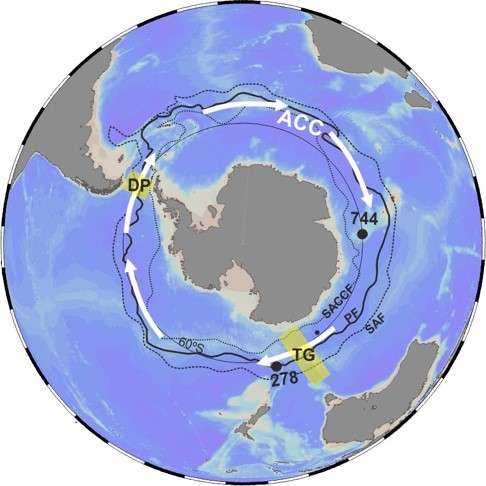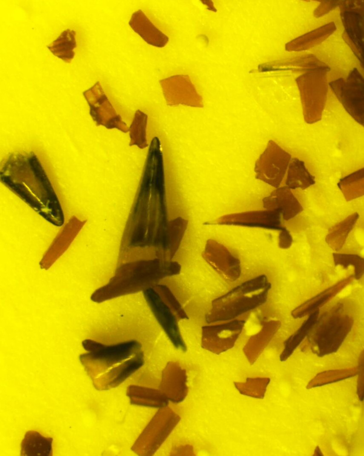Follow us on Google News (click on ☆)

Location of the climatic records (DSDP 278 and ODP 744 sites) studied to reconstruct the evolution of the Antarctic Circumpolar Current (ACC) since the Miocene. The Drake Passage (DP) and Tasman Passage (TG) are also indicated on the map, as well as the position of oceanic fronts defining the geographical contours of this current.
© Reference
The initiation of the Antarctic Circumpolar Current was long thought to be exclusively linked to the opening of the Drake Passage, between South America and the Antarctic Peninsula, and the Tasman Passage, south of Australia. It would have progressively isolated the Antarctic continent from any heat contributions, leading to its glaciation during the Eocene-Oligocene transition, about 34 million years ago.
An international team of scientists, including members from the CNRS Earth & Universe, challenges this theory. The team utilized innovative techniques, such as neodymium isotopes analyzed on fossil fish teeth, and measured the size of grains in marine sediments collected from the Southern Ocean covering the last 31 million years. These new records have identified the period during which the Antarctic Circumpolar Current exhibited circulation and intensity similar to today's, meaning a powerful current that extends from the surface to, almost, the abyssal depths and over a vast area.

Microscopic identification of fossil fish teeth found in the sediments of the Southern Ocean before drilling and neodymium isotope analysis to trace the evolution of water masses.
© Reference
Scientists have found that these large-scale hydrological and atmospheric changes resulted from the global cooling of Earth's climate and the resulting glaciation of Antarctica during the middle Miocene climatic transition 14 million years ago, that is, 20 million years later than suggested by previous studies. We have thus concluded that it is these climate changes that are responsible for the birth of this current as we know it today.
This study, therefore, raises many fundamental questions concerning the future of this current in the context of climate change, global warming, and the gradual melting of ice in Antarctica.
Reference:
Evangelinos, D., Etourneau, J., van de Flierdt, T. et al.
Late Miocene onset of the modern Antarctic Circumpolar Current. Nat. Geosci. 17, 165-170 (2024).